What to look for in a snorkel mask
This article is Part 2 of my epic series on buying your own mask and snorkel for your next snorkeling trip!
- (You’re here!) Part 2: What to look for in a snorkel mask, plus recommendations for different face shapes
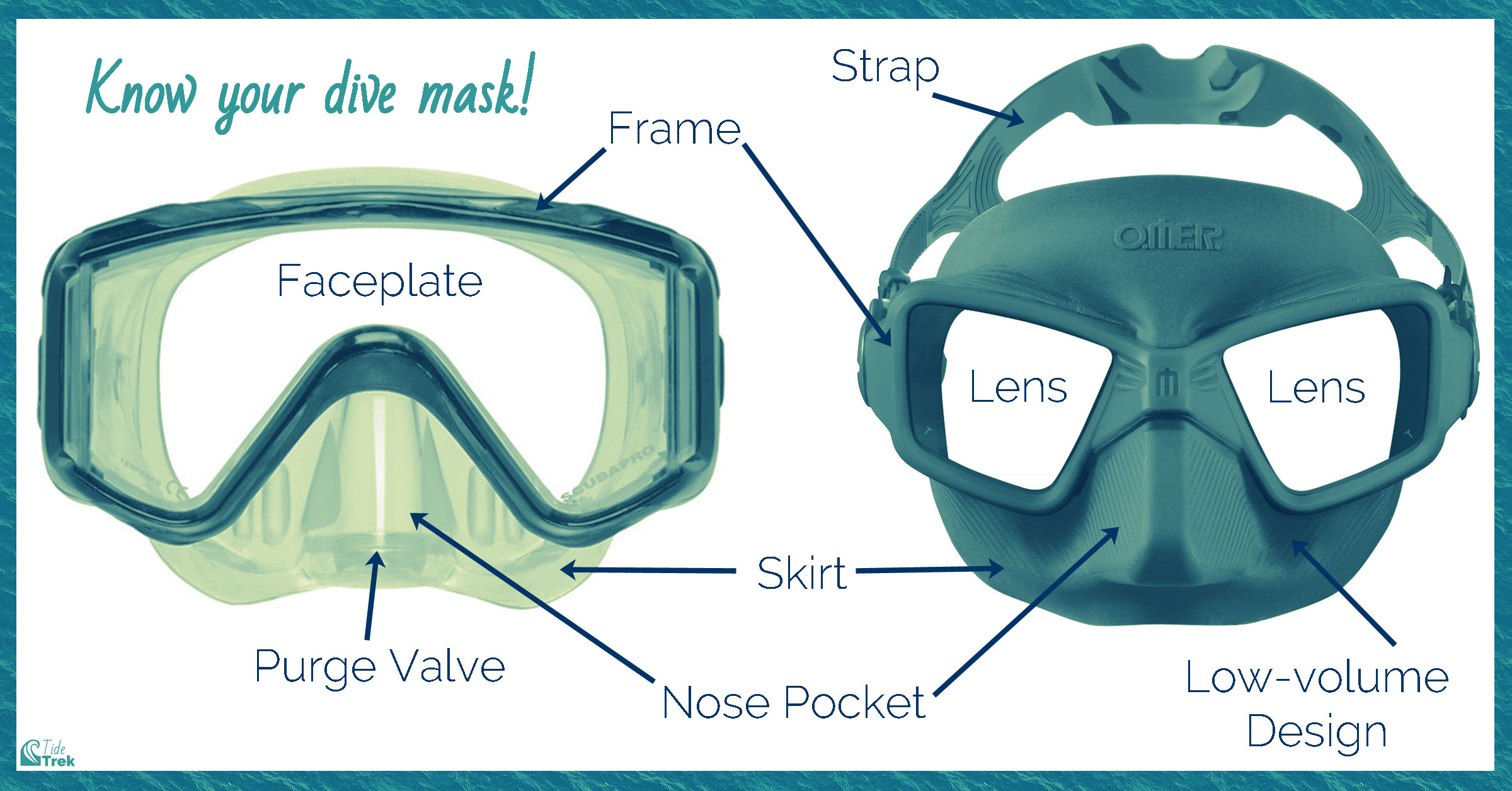
Essential components to look for in a snorkel mask
A diving mask’s primary function is to seal a layer of air in your field-of-vision so that you can see underwater. A mask accomplishes this better than swim goggles because the field-of-view is much larger. A diving mask will also make a seal around your nose. For casual snorkelers, this is mostly a comfort feature (no one likes getting water up their nose!) For anyone that descends below the surface, such as a SCUBA diver or freediver, that nose seal is essential. As pressure increases with depth, the volume of air in the mask will get smaller. A diver makes up that lost volume by exhaling a little air from their nose into the mask. This technique is called mask equalization.
Choose a mask with tempered glass and hypoallergenic silicone
All top quality diving masks will have a tempered glass faceplate or lenses. This feature should be indicated on the mask’s packaging, online product description, or even the mask itself. Tempered glass has been specially treated so that it shatters into blunt granules instead of sharp splinters and shards. Oh dear, now I’m thinking about eyes and glass splinters! *shudders* All the more reason to never compromise on this feature! The lenses or faceplates on cheap masks can be made with untreated glass, or even polycarbonate plastic instead of glass, which is prone to scratching.
The skirt of your mask should be made with hypoallergenic silicone. The cheaper alternatives are natural rubber and PVC, which are prone to hardening, cracking, and sun damage over time.
Though tempered glass and high-quality silicone make a diving mask more expensive, they also make it much safer and longer-lasting!
Related Post: What to look for in a dive mask (Top 5 quality indicators)
Choose a mask that properly fits your face
So you’ve picked out a candidate mask at your dive shop or have received a purchase you made online. The first thing you should do is a “face-fit test”. Here’s how:
- Move the strap over the front of the mask. Gently press the mask skirt onto your face while holding your breath. Does it stick a little bit? Make sure there isn’t any hair caught under the skirt!
- Inhale a little with your nose. Does the mask stick to your face without you holding it there?
If you answer yes to both questions then the mask skirt is making a proper seal with your face!
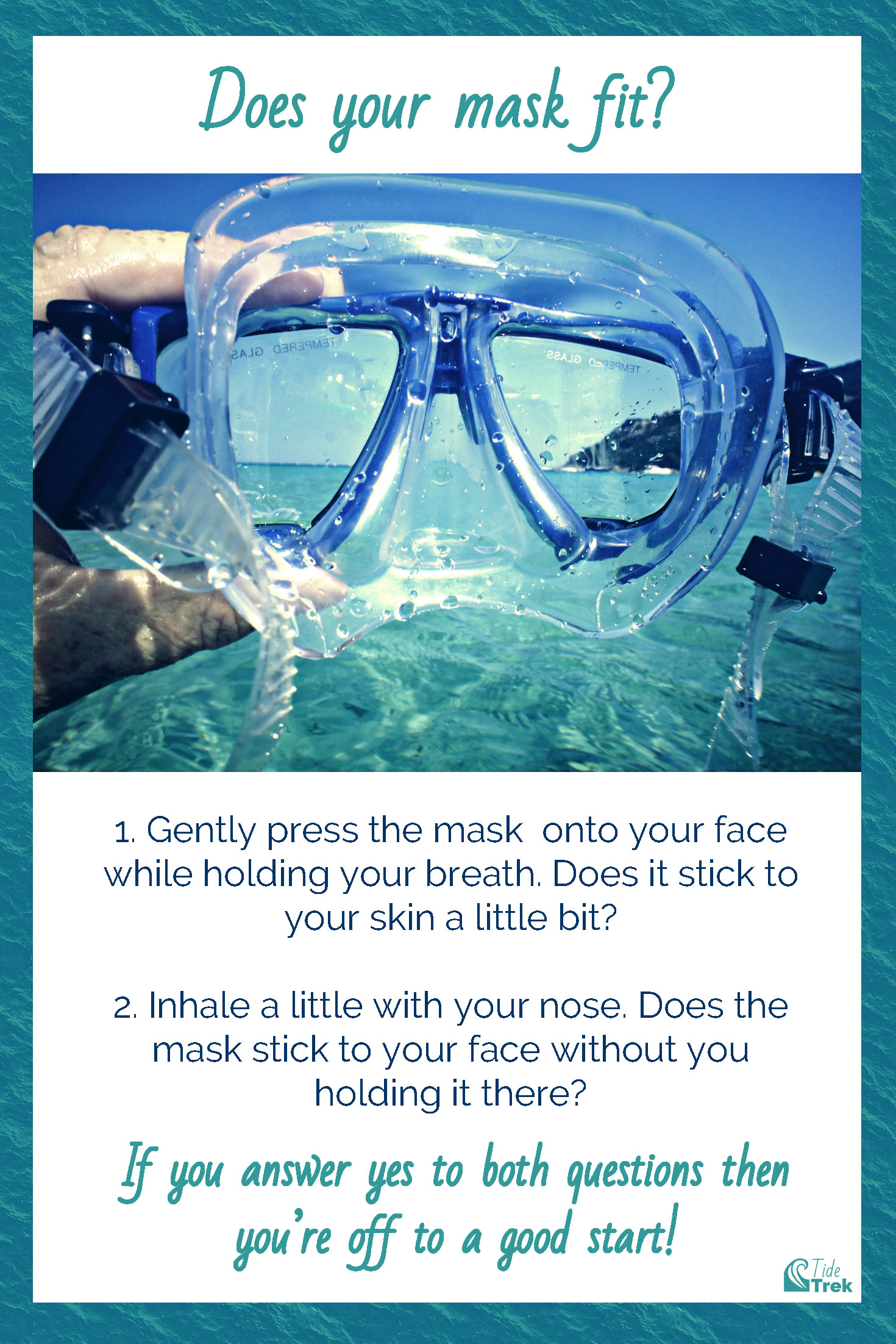


A mask skirt that doesn’t seal on your face properly will result in leaks and fogging!
Be thorough and evaluate the fit even further:
- Does the skirt fit snugly at the sides of your face next to your eyes? Take a look in a mirror to see if both the outer and inner seals are touching your face all the way around.
- If you squint your eyes a little or twitch your cheek and lip muscles, does the seal break easily?
- Does the skirt feel comfortable? Does your nose have enough room? (I promise I’m not trying to make you self-conscious about your nose! I just want you to choose a mask that fits well!)
- Now try the mask with the strap on. The strap should sit higher on your head, just below your crown, not right above your ears. You shouldn’t need to tighten the strap too much for the skirt to seal on your face. A too-tight mask will be leaky and leave red indents on your skin after prolonged use!
Tip: If you have facial hair, it’s best to shave before doing this test and before using your mask in the water. If you really love your ‘stache, you can improve your seal by rubbing chapstick onto the mask skirt. Just make sure you don’t use anything petroleum-based as this will damage the silicone! Your best bet is to use a product specifically designed for this purpose, such as this mask sealant.
Related Post: No-Leak Dive Mask: How to Get a Perfect Seal
How to choose a snorkel mask
Now that you know your mask should be made with tempered glass and silicone, and how it should fit on your face, you can start looking at all the different designs and styles!
I’ve written a ton of practical information below, but don’t forget that you must also feel positive about wearing your mask. Pay attention to how you emotionally react to the styles you come across. Are you thinking “Wow, that mask is super cool!” or “Hmm… that’s kind of a weird look.” You can have the fanciest, most expensive snorkel mask in the world, but you won’t enjoy using it if it doesn’t feel right for you. The same goes for snorkels as well, of course.
What is a low-volume mask?
A low-volume mask has been specially designed to minimize the amount of air inside the mask. This means the faceplate or lenses will be closer to your face.
Low-volume masks are an essential choice for freedivers. That’s because they require less air to equalize at depth. As a result, the diver can conserve their precious oxygen capacity during breath-hold.
Nevertheless, plenty of casual snorkelers also enjoy low-volume masks for their superior peripheral vision.
Related Post: What is a Low-Volume Mask? (They Aren’t Just for Freedivers!)
Should you choose a low-volume mask?
Why else might a low-volume mask be a good choice? Well, I’ve noticed that because of the low-volume requirement, they tend to be a bit smaller. A freediver’s need for hydrodynamic efficiency also means they tend to be lighter. As someone with a small, narrow face, freediving masks have always been the most suitable for me because of their light and compact design. I don’t just use them for freediving, but casual snorkeling and SCUBA as well!
The mask I’ve preferred for several years is the Cressi Occhio Plus. Though Cressi has discontinued this mask, the basic elements of its design are still present in newer models (see Recommended Masks below). Before I tried my Cressi, I had no idea a mask could be so comfortable! It never feels too heavy, almost never leaks, and I often forget it’s even on my face!
Needless to say, if you’ve had trouble in the past with masks feeling too heavy and clunky, you might want to give a low-volume mask a try!
Other mask features to consider
Dual lenses vs. faceplate
Snorkel masks can have separate lenses or a continuous faceplate window. Which you prefer is a personal decision as neither is inherently better or worse than the other. Low-volume masks typically have dual lenses. Some folks prefer a continuous faceplate if they want their visual field to be as clear as possible (e.g. underwater photographers).
Related Post: Single Vs. Double Lens Masks: A Matter of Taste
Frameless mask
The component of the mask that holds the lenses or faceplate (the frame) is usually molded separately from the skirt. However, design trends in recent years favor frameless construction for single-window masks. The faceplates of these masks are molded directly into the skirt. This design allows for lower volume, greater flexibility, and lighter weight. These masks are also great for traveling because you can crumple the skirt right against the faceplate.
Related Post: Framed Vs. Frameless Masks: Pros and Cons
Skirt color and opacity
As a snorkeler, you’ll mostly be using your mask at or near the surface of the water. That means you’ll be getting a lot of sun! The glass and silicone of the mask will block most incoming UV rays, but your eyes can still become fatigued in bright sunlight. A mask with a dark-colored, opaque skirt (as opposed to a clear skirt) will offer your eyes some shade on sunny days. Because I have some hypersensitivity to light, I always prefer black skirt masks. However, other folks prefer clear skirts specifically because they let more light in. This clarity can make the mask feel more “invisible”. Most high-quality masks come in both dark and clear skirt versions.
Corrective lenses
Though this feature was once quite rare, more masks these days have the option to include prescription lenses. Folks who cannot wear contact lenses (or prefer not to) now have several models to choose from. You can replace the regular lenses in these masks with corrective versions. You’ll just need to know what your prescription is in diopter increments. However, this feature cannot work for masks with a full faceplate. If your prescription is severe enough that lenses aren’t available in your measurements, you may need to have your mask custom-made.
Strap-adjust mechanism
Ideally, you’ll want a strap that’s easy to tighten on the fly. Pulling the free tabs of the strap while it’s on your face shouldn’t take much effort. At the same time, a tightened strap shouldn’t be prone to spontaneous loosening.
Purge valve
Some masks have a purge valve on the nose pocket to help you clear the mask if too much water leaks in. Exhaling through your nose with the mask on will open the valve, allowing the water to drain out. However, this feature is more useful for SCUBA divers who have difficulty with mask clearing technique. Most snorkelers will do fine by emptying their masks at the surface. The valve will also add some rigidity to the skirt around your nose, which some folks find less comfortable. It can also be prone to leaking if debris gets caught in it. I personally find this feature gimmicky and wouldn’t recommend it. Leaking won’t be a major problem for you if you choose a mask that fits your face well.
Related Post: Purge valves on dive masks (Gimmick or useful?)
Recommended masks
Because the price points of these masks and snorkels are always changing (due to promotions, sales, and discounts) I’ve separated the price ranges into three rough categories: Budget (US $40 and under), Standard (US $40-$80), and Premium (US $80 and over). Again, these are rough and you may find that the category is slightly off if you follow-through on a link during a sale or promotion.
Single faceplate masks
1. Cressi Frameless F1 Mask
- Price category: Budget $
- Ideal face-shape: Small to average, oval-shaped face
- Low-volume: Yes
- Color options: Clear, Opaque (variety of colors)
- Corrective lenses available: No
- Special features: Frameless
- Other notes: May not fit larger noses
2. Oceanic Shadow Single Window Mask
- Price category: Standard $$
- Ideal face-shape: Fits most face-shapes; Works well on narrower faces
- Low-volume: Yes
- Color options: All Black, Clear
- Corrective lenses available: No
- Special features: Frameless; swivel strap buckles for a better fit; soft neoprene strap (but harder to adjust on the fly)
- Other notes: Also comes in a mini size, suitable for children and adults with very small faces
3. Atomic Frameless Mask
- Price category: Premium $$$
- Ideal face-shape: Regular size for wider, round faces; Medium size for narrower faces (this size seems to be preferred by women)
- Low-volume: Yes
- Color options: Black or Clear, each with a variety of color accents
- Corrective lenses available: No
- Special features: Frameless; Very wide horizontal and vertical field of vision; Optical quality tempered glass maximizes light transmission (a great choice for photographers)
- Other notes: Comes in two adult sizes (Regular and Medium) to suit a wide range of faces
Dual lens masks
1. Cressi Big Eyes Evolution Mask
- Price category: Standard $$
- Ideal face-shape: Small to average faces
- Low-volume: Yes
- Color options: Black or Clear, each with a variety of color accents
- Corrective lenses available: Yes, but the snap ring may be prone to breaking during lens exchange
- Special features: Buckles pivot in all directions and are attached to the frame with a strong, flexible elastomer; teardrop-shaped lenses are slightly inclined downward for an exceptional field-of-vision
- Other notes: The clear version uses a specially formulated silicone (Crystal) for improved light transmission
2. Cressi Eyes Evolution Crystal Mask
- Price category: Standard $$
- Ideal face-shape: Same features as the Cressi Big Eyes Evolution, but designed for small and narrow faces; Especially suitable for women
- Low-volume: Yes
- Color options: Black or Clear, each with a variety of color accents
- Corrective lenses available: No
- Special features: Buckles pivot in all directions and are attached to the frame with a strong, flexible elastomer; teardrop-shaped lenses are slightly inclined downward for an exceptional field-of-vision
- Other notes: The clear version uses a specially formulated silicone (Crystal) for improved light transmission
3. TUSA Liberator-Plus Two Window Mask
- Price category: Standard $$
- Ideal face-shape: Wider, round faces
- Low-volume: Yes
- Color options: All Black or Clear with a variety of color accents
- Corrective lenses available: Yes
- Special features: Large lenses make a great choice for photographers
Ultra low-volume masks (micro-masks)
1. Cressi Superocchio Mask
- Price category: Standard $$
- Ideal face-shape: Wide range of faces, small to large
- Low-volume: Ultra-low
- Color options: All Black
- Corrective lenses available: No
- Special features: Extra durable polymer frame
- Other notes: A classic freediving and spearfishing mask that’s been around for many years; silicone is a bit stiffer than on newer models; newer designs may have better peripheral vision
2. Aqua Lung Micro-Mask
- Price category: Premium $$$
- Ideal face-shape: Wide range of faces, small to large
- Low-volume: Ultra-low
- Color options: All Black or Clear with a variety of color accents
- Corrective lenses available: No
- Special features: Lenses are positioned inside the ocular orbit (the natural recessions in your face where your eyes are) for superior peripheral vision despite the compact design; strap buckles pivot in multiple directions and activate with a push button
- Other notes: Compact design reduces drag and buoyancy, making it ideal for freediving and spearfishing; very easy to clear
3. Omer Zero 3 Mask
- Price category: Premium $$$
- Ideal face-shape: Small to average faces; can accommodate larger noses, but the frame can press against a more prominent brow ridge
- Low-volume: Ultra-low
- Color options: All Black; Black with green or brown frames
- Corrective lenses available: No
- Special features: Very wide field of vision; textured skirt reduces glare and allows gloved hands to hold the nose without slipping; swivel strap buckles
- Other notes: One of the lowest-volume micro-masks around, it doesn’t require equalization until a depth of 50-60 feet!
What’s next?
That’s it for Part 2 of this series! Next, it’s time to pick a snorkel to go with your new mask…
Part 3: How to decide if you should get a classic, semi-dry, or dry snorkel, plus recommendations for each type
I also go over a few critical snorkeling accessories you can’t do without, and I wrap everything up in a tidy summary!
Did this guide help you choose a mask and snorkel?
Let me know in the comments what your favorite mask and snorkel are! Also, if you’ve got any stories about gear that didn’t work well for you, I’d like to hear about them if you’re comfortable sharing, especially if it was a problem you were able to solve or otherwise overcome!



Disclaimer: Some of the links used in this article are affiliate links. That means I may get a small commission if you buy a product after following the link. If this guide helped you make a decision, consider it like giving me a little thank you!
If you want to keep updated on the content I produce here at Tide Trek, please consider signing up to my mailing list. At the end of each month I prepare a little round-up newsletter that summarizes new articles I’ve written, and content I’ve curated covering all things water sports (even some cool marine science too!)
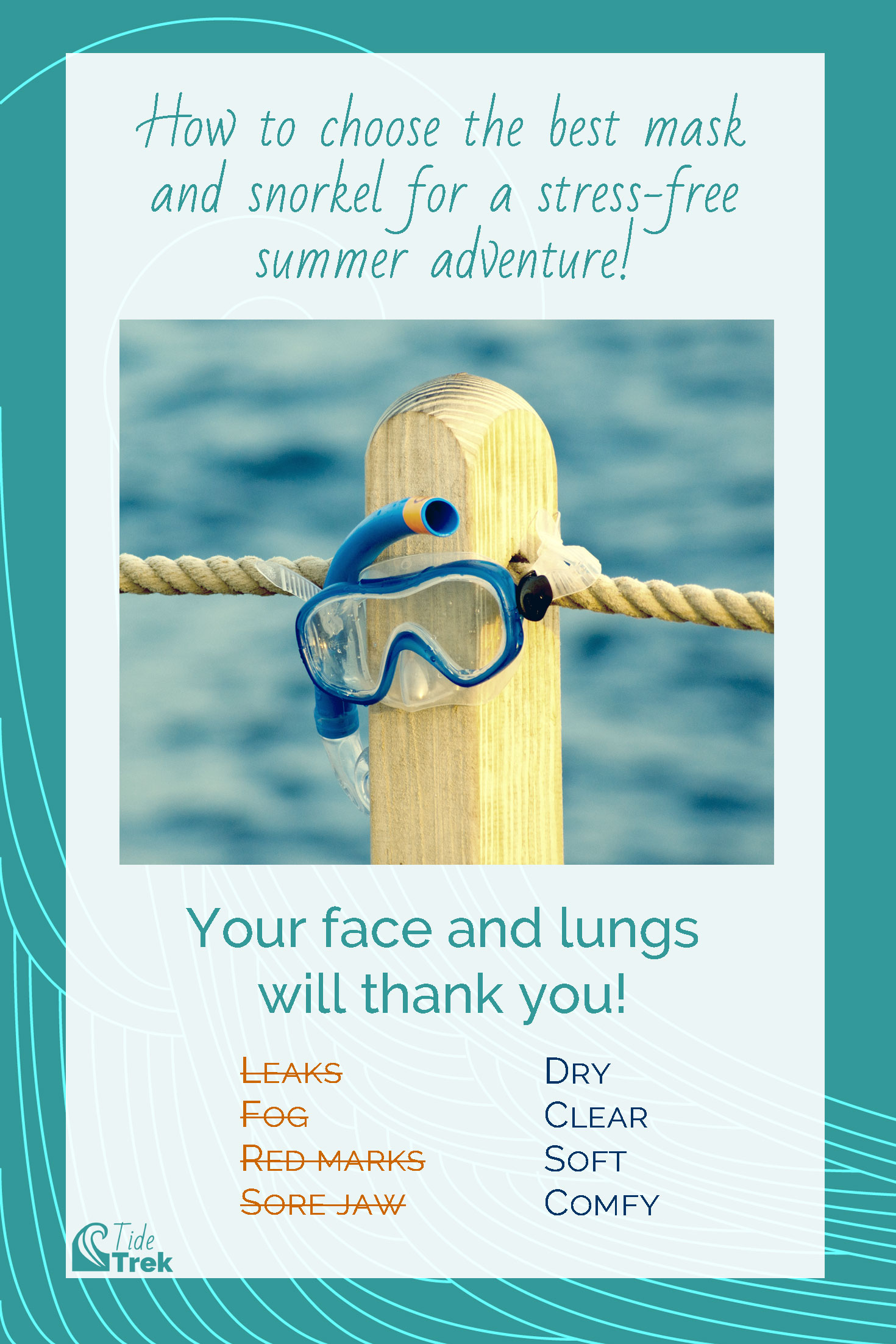


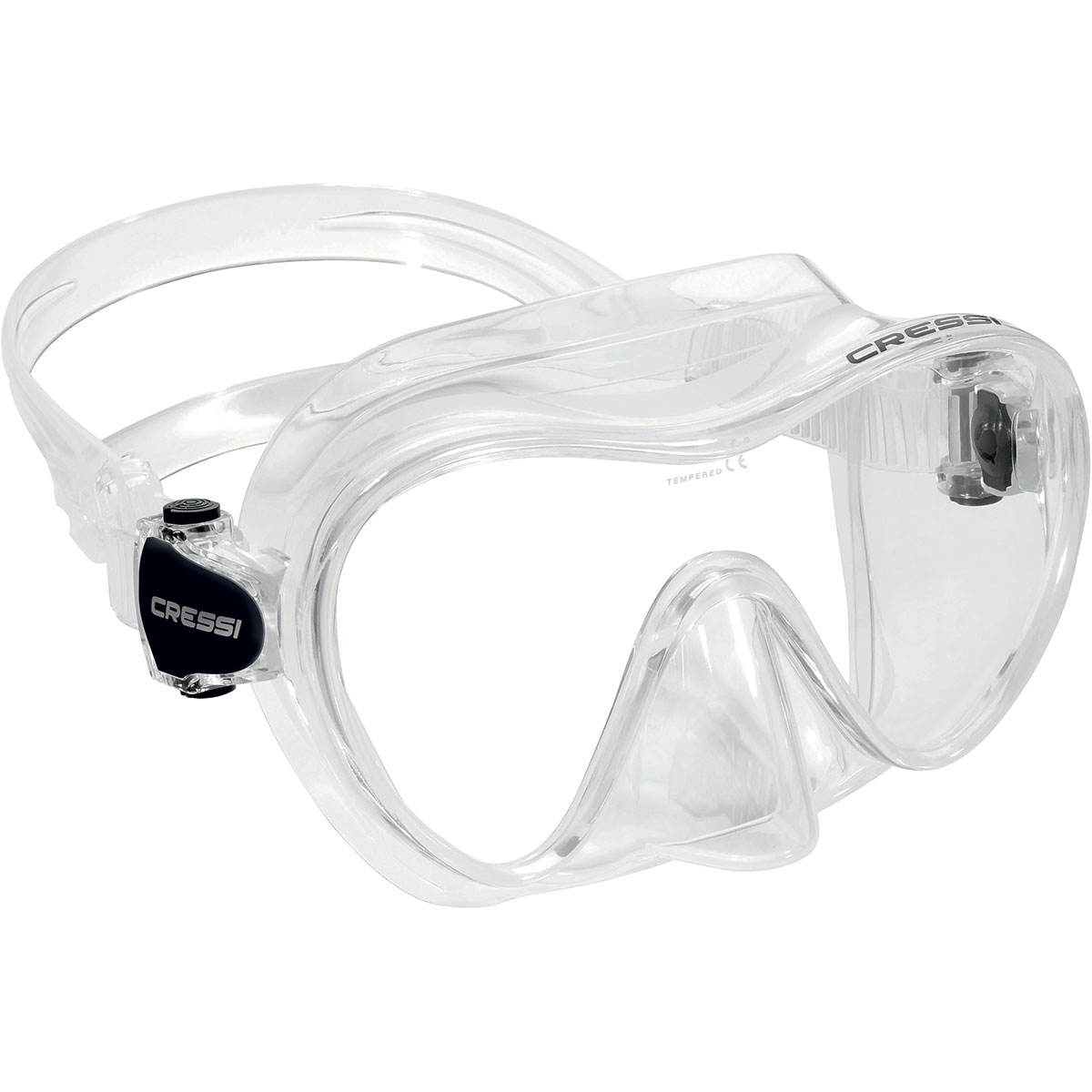
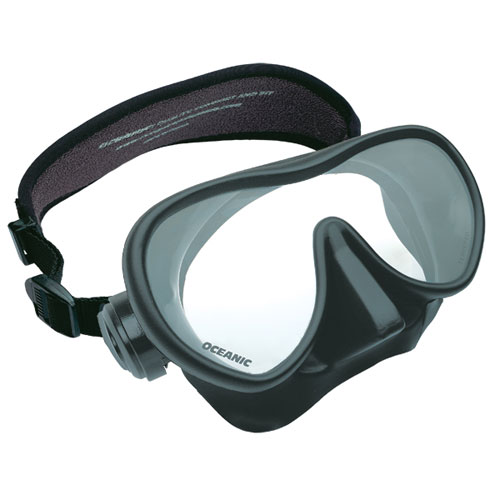
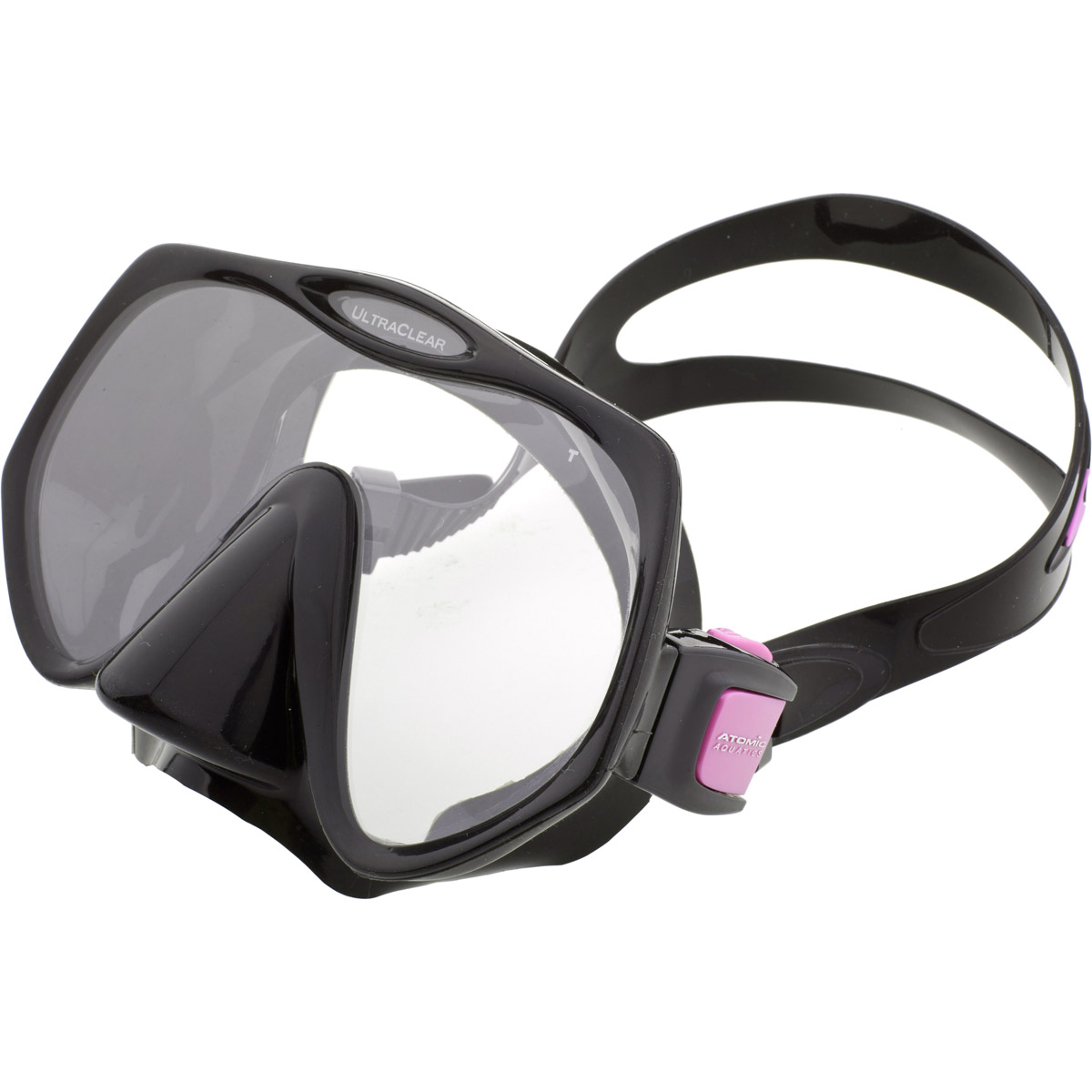

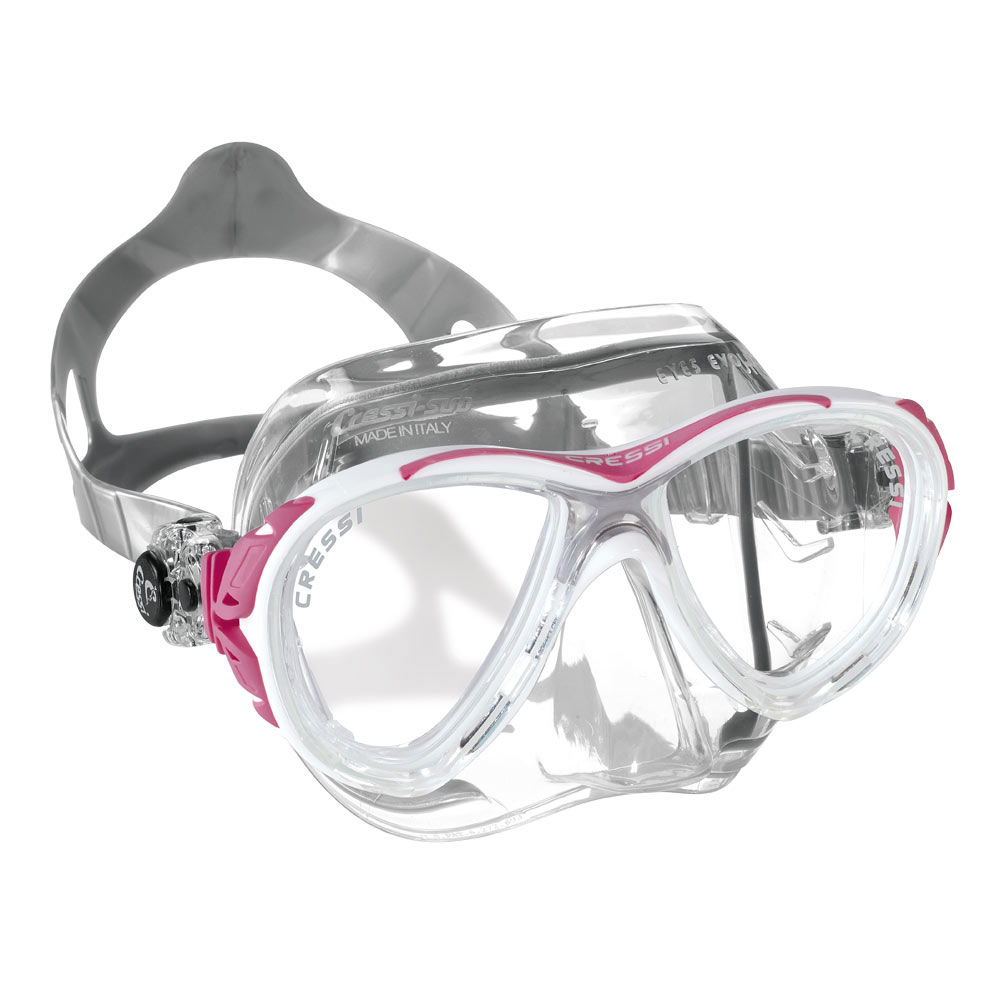
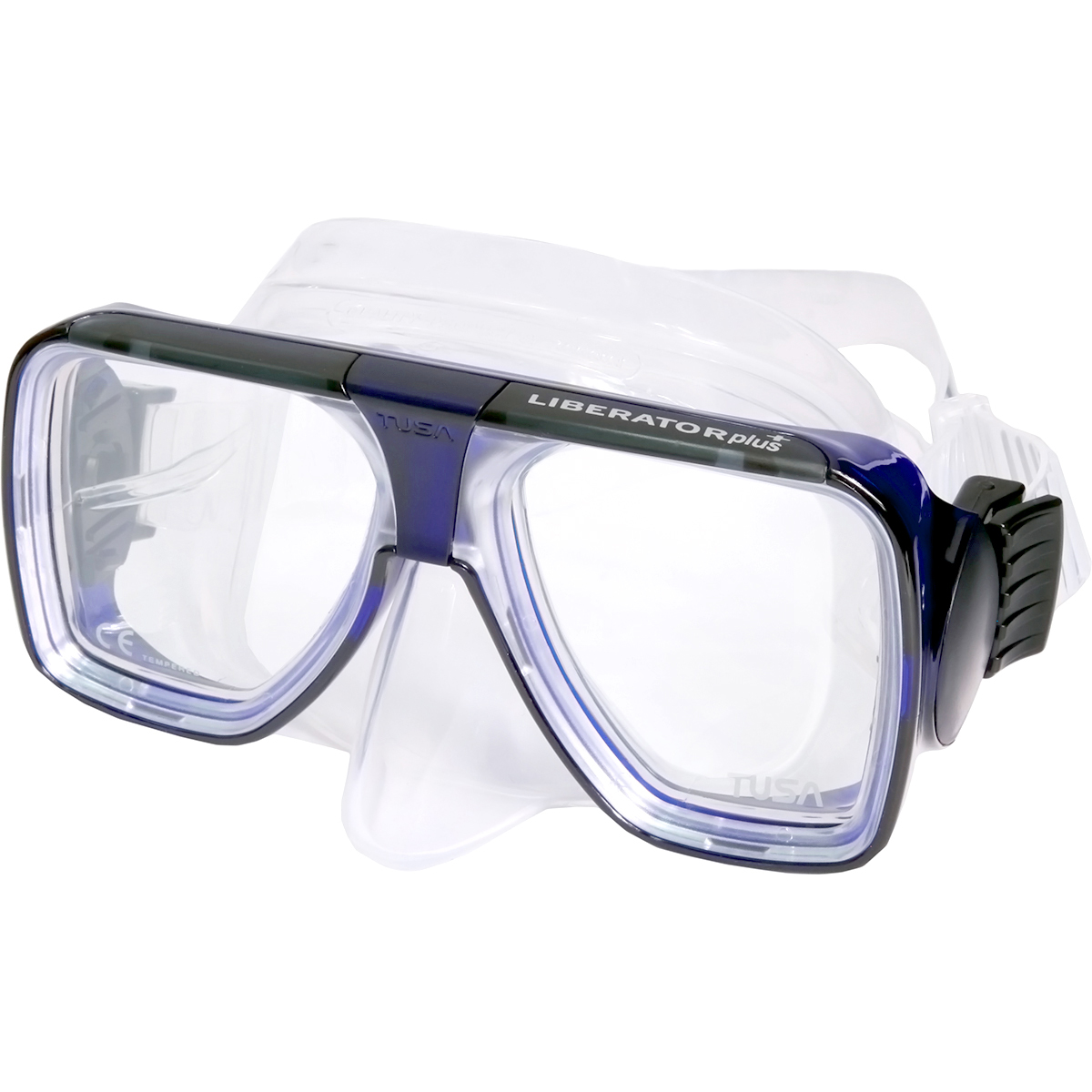
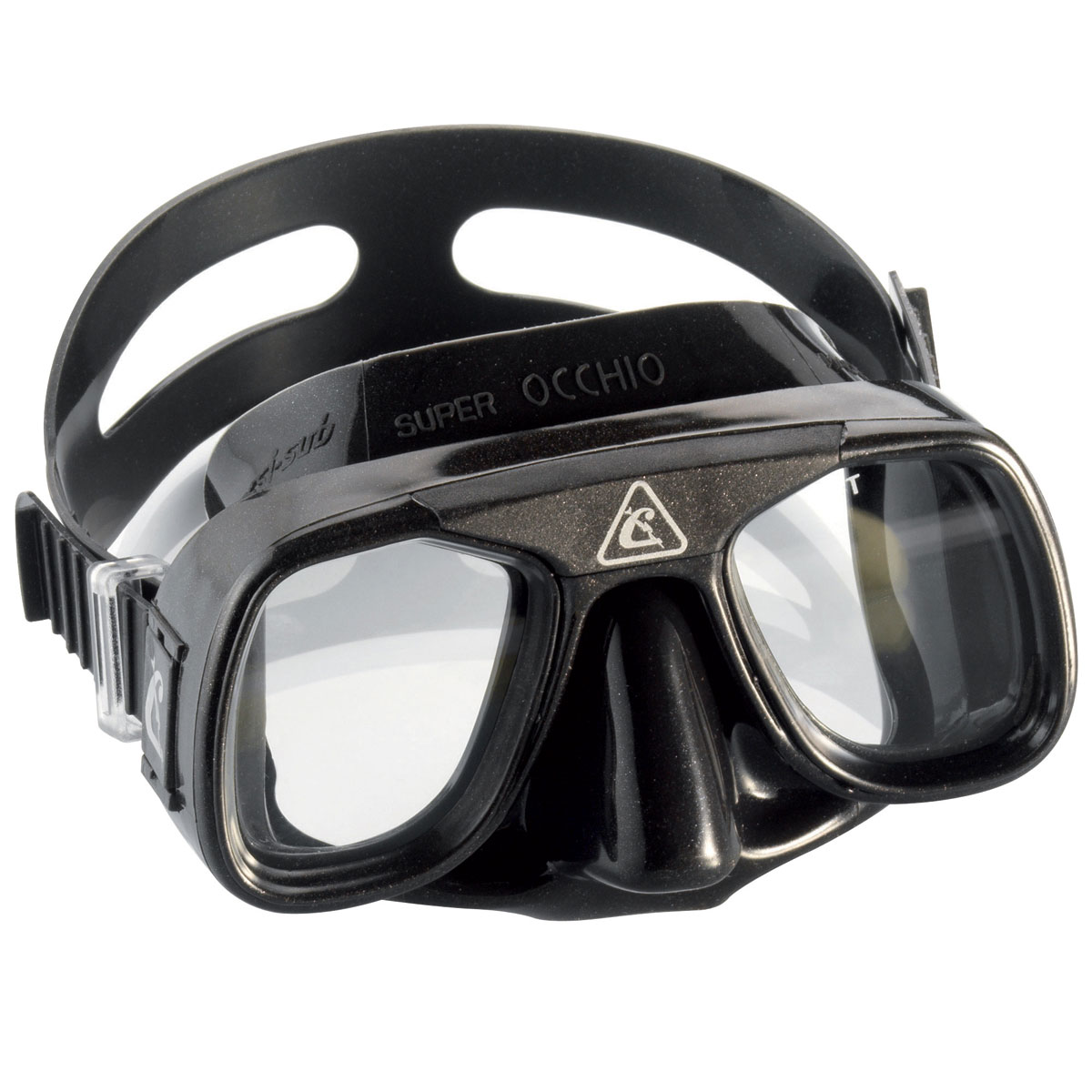
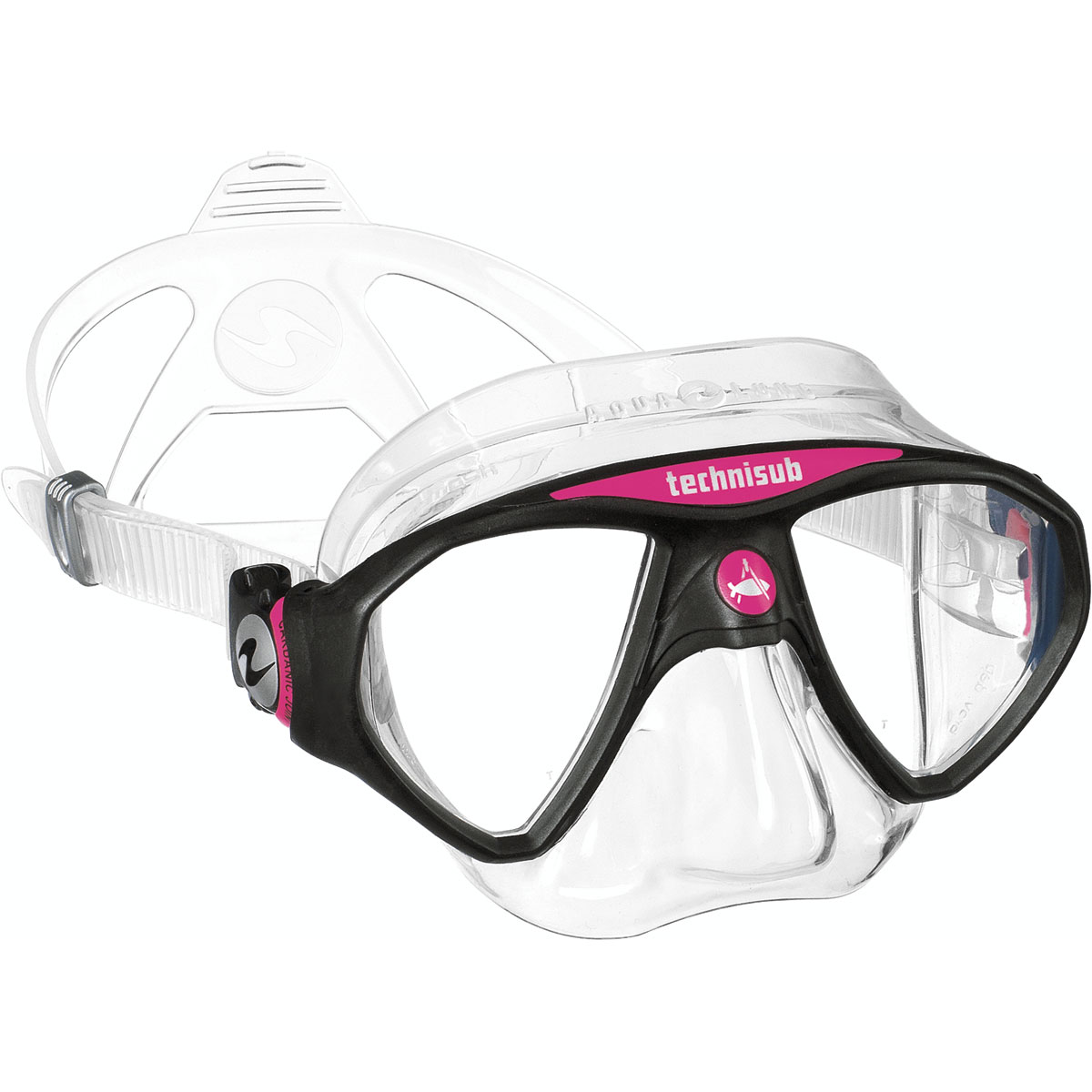
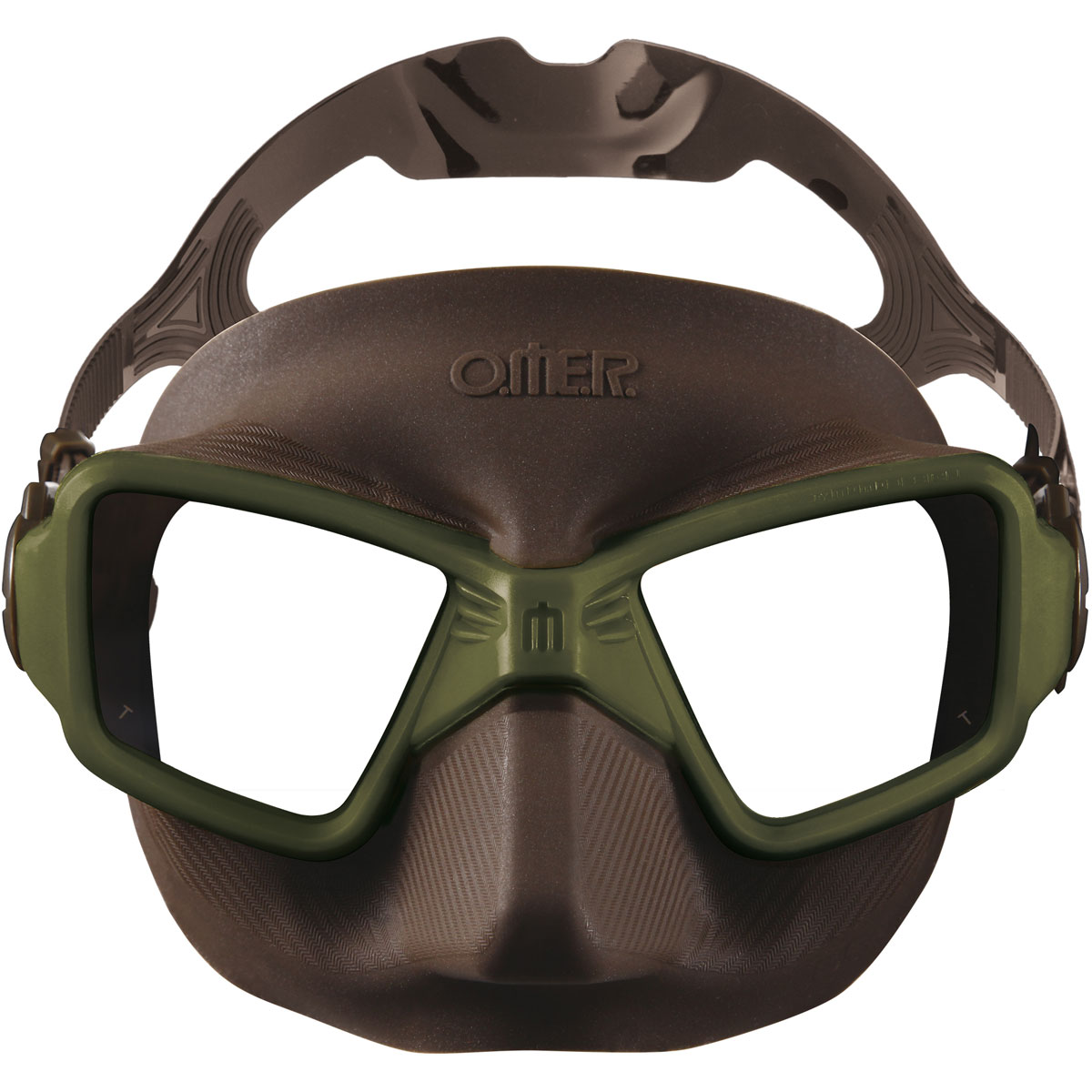
What are your thoughts? Please don't be shy!